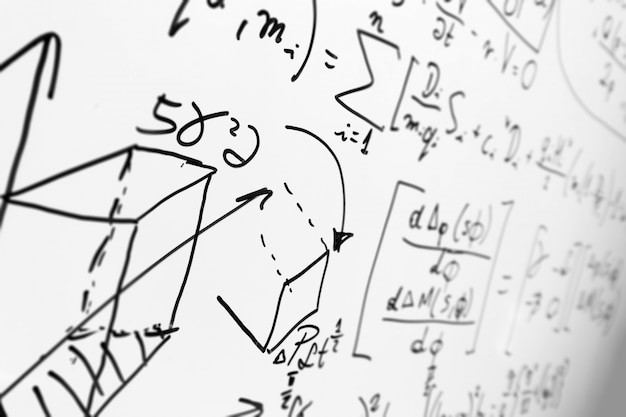The Role of Mathematics in Technological Advancements

Mathematics and technology have always shared a symbiotic relationship, with each driving the other forward. From the early days of calculus, which revolutionized physics and engineering, to the complex algorithms that power today’s digital world, mathematical principles have been at the heart of technological progress. Historical milestones, such as the development of calculus by Newton and Leibniz, laid the groundwork for advancements in various scientific fields. These early contributions underscore the importance of mathematics in shaping the technological landscape we navigate today.
As we delve deeper into the relationship between mathematics and technology, it becomes evident that mathematical concepts are not just abstract theories but practical tools that solve real-world problems. The precision and logical structure of mathematics make it an ideal language for describing and manipulating the physical world. This relationship has only grown stronger with time, as new mathematical discoveries continue to fuel technological innovation.
Understanding the historical context of this relationship helps us appreciate the profound impact mathematics has had on technology. It also sets the stage for exploring how modern mathematical applications are driving advancements in various fields, from computer science to medicine. By examining these intersections, we can gain a deeper appreciation for the role of mathematics in our increasingly technological world.
Algorithms and Data Structures
In the realm of computer science, mathematics is the backbone that supports the development of algorithms, data structures, and computational theory. Algorithms, which are essentially step-by-step procedures for solving problems, rely heavily on mathematical principles. For instance, search algorithms like binary search and sorting algorithms like quicksort are grounded in mathematical logic and efficiency.
Cryptography, another critical area in computer science, uses complex mathematical theories to secure data. Techniques such as RSA encryption are based on number theory and modular arithmetic, ensuring that sensitive information remains protected. Error-correcting codes, which detect and correct errors in data transmission, also depend on mathematical concepts like linear algebra and finite fields.
Educational programs like IB Math prepare students for these complex topics by providing a strong foundation in the necessary mathematical principles. By mastering these concepts, students are better equipped to tackle the challenges of computer science and contribute to the development of innovative technologies.
Engineering Marvels
Engineering disciplines, whether civil, mechanical, or electrical, rely heavily on mathematics to design and optimize solutions. In civil engineering, structural analysis uses mathematical models to ensure buildings and bridges can withstand various forces. Mechanical engineering employs fluid dynamics to design efficient systems, from car engines to HVAC systems.
Electrical engineering, on the other hand, uses circuit design principles grounded in mathematics to develop everything from household appliances to advanced communication systems. Mathematical models and simulations play a crucial role in these processes, allowing engineers to test and refine their designs before implementation.
The integration of mathematics in engineering not only enhances the precision and reliability of solutions but also drives innovation. By leveraging mathematical principles, engineers can push the boundaries of what is possible, creating structures and systems that are more efficient, sustainable, and resilient.
Telecommunications Breakthroughs
Telecommunications is another field where mathematics plays a pivotal role. Signal processing, which involves the analysis and manipulation of signals, relies on mathematical techniques such as Fourier transforms and wavelet analysis. These methods enable the efficient transmission and reception of data, ensuring clear and reliable communication.
Network theory, which studies the behavior of interconnected systems, uses graph theory and probability to optimize the performance of communication networks. Information theory, developed by Claude Shannon, uses mathematical concepts to quantify information and improve data compression and error correction techniques.
The development of 5G technology, which promises faster and more reliable wireless communication, is a testament to the power of mathematics in telecommunications. Programs like IB Math provide the foundational knowledge needed to understand these complex concepts, preparing students for careers in this rapidly evolving field.

Financial and Economic Models
In finance and economics, mathematics is indispensable for quantitative analysis, risk management, and economic modeling. The Black-Scholes model, for example, uses differential equations to price options, helping investors make informed decisions. Econometric models, which use statistical methods to analyze economic data, guide policymakers in crafting effective economic policies.
Mathematical techniques have transformed financial markets, enabling the development of sophisticated trading algorithms and risk management tools. These innovations have made markets more efficient and resilient, benefiting investors and the economy as a whole.
Understanding the mathematical underpinnings of finance and economics is crucial for anyone looking to navigate these fields. By mastering these concepts, individuals can better understand market dynamics, make informed decisions, and contribute to the development of more robust economic systems.
Medical and Biological Insights
Mathematics has also made significant contributions to medicine and biology. Biostatistics, which applies statistical methods to biological data, is essential for designing and analyzing clinical trials. These trials, in turn, inform medical practices and improve patient outcomes.
Medical imaging techniques, such as MRI and CT scans, rely on mathematical algorithms to create detailed images of the human body. These images are crucial for diagnosing and treating various medical conditions. Bioinformatics, which uses mathematical and computational methods to analyze biological data, has revolutionized fields like genomics and proteomics.
Mathematical models help researchers understand complex biological systems, from the spread of diseases to the functioning of ecosystems. By providing a quantitative framework for these studies, mathematics enables more accurate predictions and better-informed decisions, ultimately improving healthcare and environmental management.
Foundations of AI and Machine Learning
Artificial intelligence (AI) and machine learning (ML) are fields that heavily depend on mathematics. Linear algebra, calculus, and probability theory form the foundation of many AI and ML algorithms. For instance, neural networks, which are inspired by the human brain, use linear algebra to process and analyze data.
Decision trees, another common ML technique, rely on probability theory to make predictions based on data. These mathematical tools enable the development of intelligent systems that can learn from data and make decisions with minimal human intervention.
Programs like IB Math equip students with the necessary skills to understand and develop these advanced technologies. By mastering the mathematical principles behind AI and ML, students can contribute to the creation of smarter, more efficient systems that have the potential to transform various industries.
Building a Strong Mathematical Foundation
A strong mathematical education is crucial for preparing the next generation of innovators and technologists. Educational programs and curricula, such as IB Math, provide students with a solid foundation in mathematical principles, enabling them to tackle complex problems and develop innovative solutions.
A rigorous mathematical education also fosters critical thinking and problem-solving skills, which are essential for success in any field. By learning to approach problems logically and systematically, students can develop the analytical skills needed to navigate the challenges of the modern world.
Investing in mathematical education is not just about preparing students for specific careers; it is about equipping them with the tools they need to think critically, solve problems, and drive innovation. By fostering a strong mathematical foundation, we can ensure that the next generation is ready to tackle the technological challenges of the future.
Mathematics and Future Technologies
Looking ahead, mathematics will continue to play a crucial role in emerging technologies. Quantum computing, which promises to revolutionize computing power, relies on complex mathematical concepts such as quantum mechanics and linear algebra. Blockchain technology, which underpins cryptocurrencies, uses cryptographic algorithms to ensure secure and transparent transactions.
Advanced robotics, which combines mechanical engineering, computer science, and AI, relies on mathematical models to design and control robotic systems. These technologies have the potential to transform various industries, from finance to healthcare, and mathematics will be at the heart of these advancements.
By understanding the mathematical principles behind these emerging technologies, we can better appreciate their potential impact and contribute to their development. As we continue to push the boundaries of what is possible, mathematics will remain a key driver of innovation and progress.
The Everlasting Bond
In summary, mathematics is an indispensable tool that drives technological advancements across various industries. From computer science to medicine, engineering to finance, mathematical principles underpin the innovations that shape our world. A strong mathematical foundation, such as that provided by IB Math, is essential for preparing individuals to tackle the challenges of the future.
As we look to the future, the role of mathematics in driving technological progress will only grow. By investing in mathematical education and fostering a deep understanding of mathematical principles, we can ensure that the next generation is ready to lead the way in developing the technologies that will shape our world.








